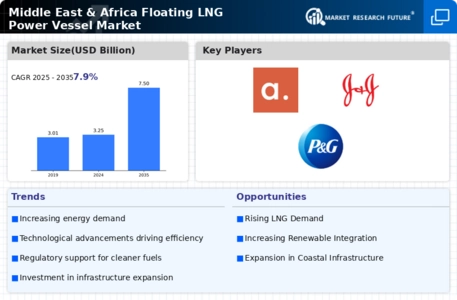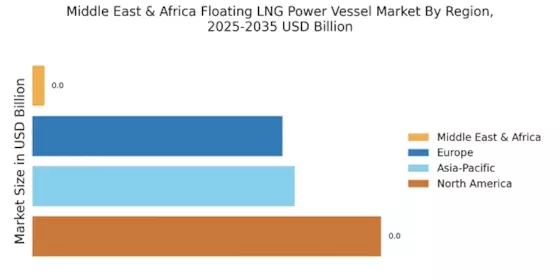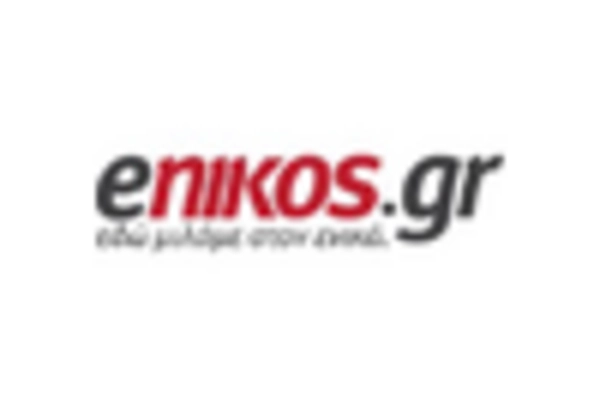Geopolitical Stability and Energy Security
Geopolitical factors are playing a crucial role in shaping the Middle East & Africa Floating LNG Power Vessel Market. As countries in the region seek to enhance their energy security, floating LNG power vessels are emerging as a viable solution. The ability to deploy these vessels in strategic locations allows nations to mitigate risks associated with energy supply disruptions. For example, nations like Egypt are leveraging floating LNG technology to diversify their energy sources and reduce dependence on traditional fossil fuels. Furthermore, the ongoing geopolitical dynamics in the region are prompting countries to invest in LNG as a means of ensuring stable energy supplies. This focus on energy security is likely to drive demand for floating LNG power vessels, positioning them as a key component of the region's energy strategy.
Strategic Investments in LNG Infrastructure
The Middle East & Africa Floating LNG Power Vessel Market is witnessing a wave of strategic investments aimed at enhancing LNG infrastructure. Countries in the region are recognizing the potential of floating LNG as a flexible and scalable solution to meet their energy needs. For instance, investments in floating storage and regasification units (FSRUs) are on the rise, as they offer a quicker and more cost-effective means of accessing LNG. The African Development Bank has reported that investments in energy infrastructure in Africa could reach USD 100 billion by 2025, with a significant portion allocated to LNG projects. This influx of capital is likely to bolster the floating LNG market, facilitating the development of new projects and enhancing the overall capacity of the sector.
Increasing Energy Demand in Emerging Economies
The Middle East & Africa Floating LNG Power Vessel Market is experiencing a surge in demand due to the rapid economic growth in emerging economies within the region. Countries such as Nigeria and South Africa are witnessing significant increases in energy consumption, driven by urbanization and industrialization. This heightened demand for energy is compelling governments and private sectors to explore alternative energy sources, including floating LNG power vessels. The International Energy Agency projects that energy demand in Africa could rise by 60% by 2040, indicating a substantial market opportunity for floating LNG solutions. As these nations strive to meet their energy needs sustainably, the floating LNG power vessels are likely to play a pivotal role in bridging the energy gap, thus propelling market growth.
Technological Innovations Enhancing Efficiency
Technological advancements are significantly influencing the Middle East & Africa Floating LNG Power Vessel Market. Innovations in vessel design and operational efficiency are enabling the development of more cost-effective and environmentally friendly floating LNG solutions. For example, advancements in hull design and propulsion systems are improving fuel efficiency and reducing operational costs. The integration of digital technologies, such as IoT and AI, is also enhancing monitoring and maintenance capabilities, thereby increasing the reliability of floating LNG vessels. According to industry reports, the adoption of these technologies could lead to a 20% reduction in operational costs by 2027. As these innovations continue to evolve, they are expected to attract further investment and interest in the floating LNG sector, thereby driving market growth.
Regulatory Support for Cleaner Energy Initiatives
The Middle East & Africa Floating LNG Power Vessel Market benefits from increasing regulatory support aimed at promoting cleaner energy solutions. Governments across the region are implementing policies that encourage the adoption of liquefied natural gas as a transitional fuel. For instance, the African Union has set ambitious targets for renewable energy integration, which indirectly supports the floating LNG sector. Additionally, countries like Qatar and the UAE are investing heavily in LNG infrastructure, aligning with their national strategies to reduce carbon emissions. This regulatory environment not only fosters investment in floating LNG technologies but also enhances the market's attractiveness to stakeholders seeking to comply with environmental standards. The alignment of regulatory frameworks with market needs is likely to stimulate growth in the floating LNG power vessel sector.


















Leave a Comment